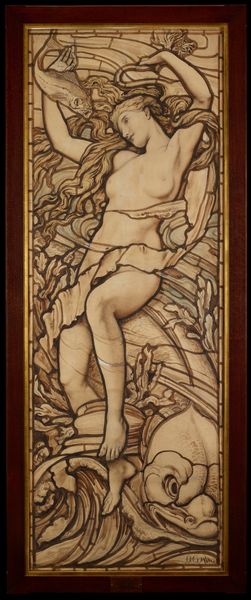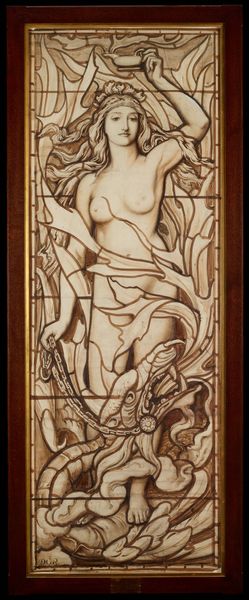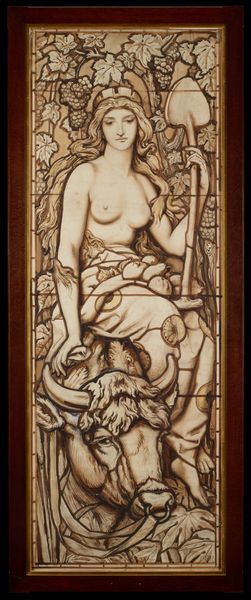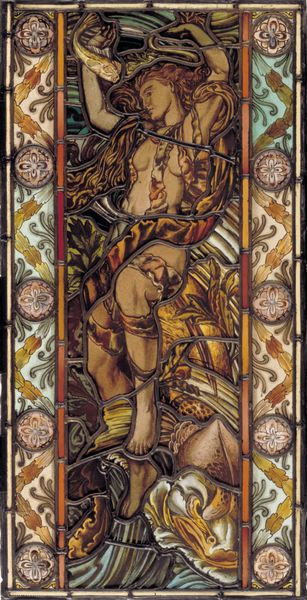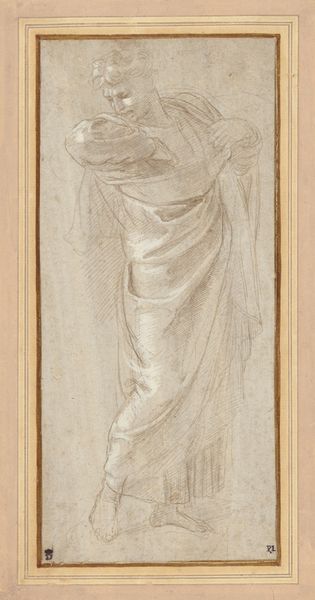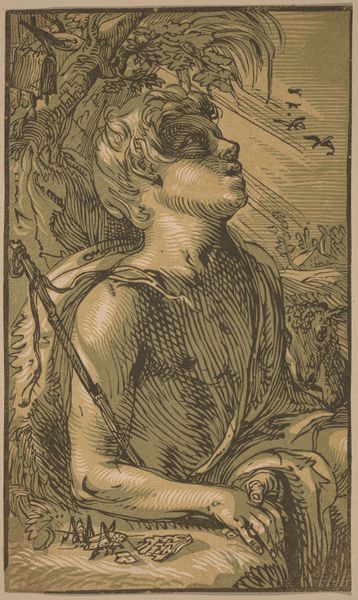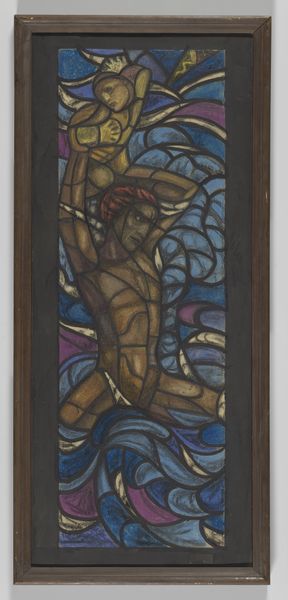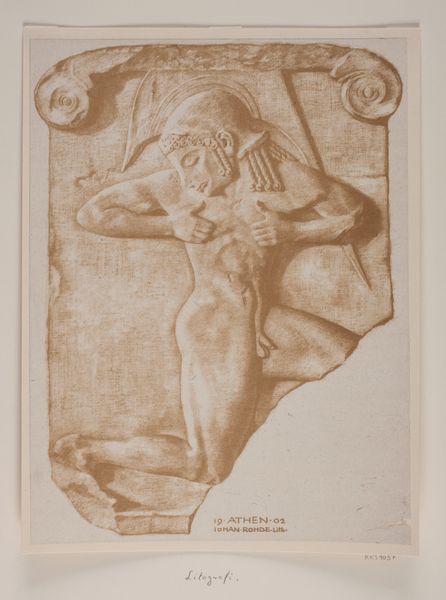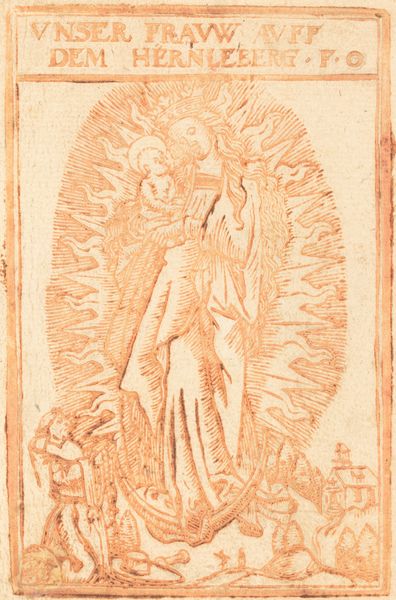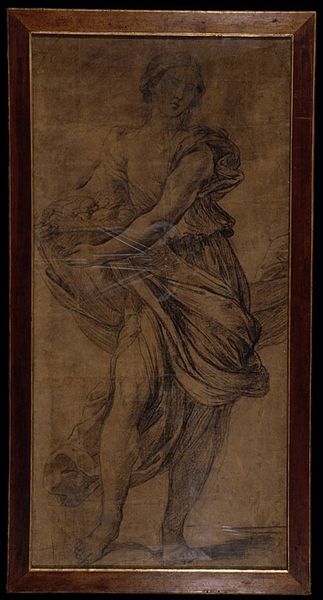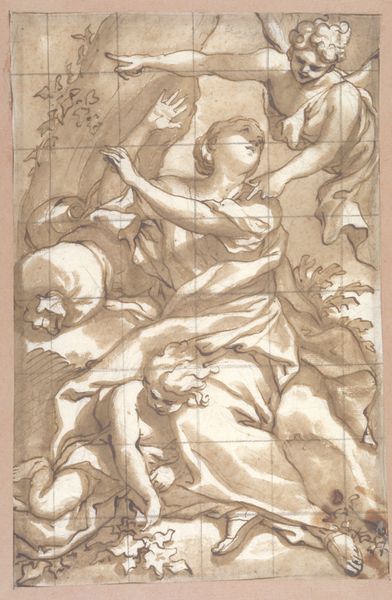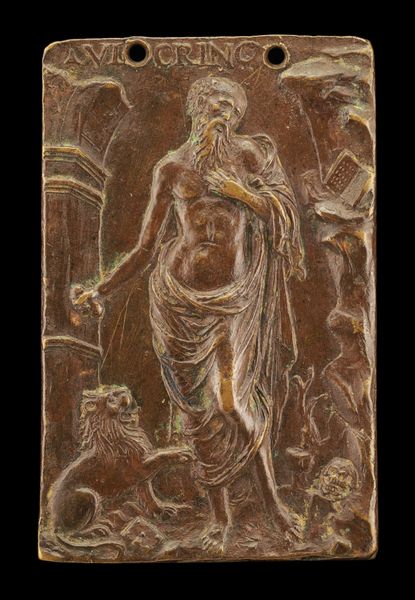
drawing, ink, pen
#
portrait
#
drawing
#
narrative-art
#
ink painting
#
figuration
#
ink
#
pen-ink sketch
#
symbolism
#
pen
#
nude
Dimensions: 68-5/8 x 25-1/8 in. (174.3 x 63.8 cm)
Copyright: Public Domain
Frederick Smith made this panel, Air, of carved wood, likely around the turn of the 20th century. Smith was a virtuoso carver. The panel’s surface is brought to life through his manipulation of the wood’s texture and form, and by the interplay of light and shadow across the artwork. The artist would have used specialized carving tools, chisels and gouges to remove sections of wood, meticulously shaping the figure, birds, and clouds. The linear quality of the panel recalls drawing, and also stained glass windows. The work shows a strong connection to the Arts and Crafts movement. This was a period of renewed interest in handcraftsmanship, as an antidote to industrial production. Smith's embrace of carving stands as a testament to the enduring appeal, and skill, involved in working directly with materials. It reminds us of the value of human labor, at a time of increasing mechanization.
Comments
minneapolisinstituteofart almost 2 years ago
⋮
The attribution of this impressive stained glass design, along with its three companion drawings in Mia's collection (10.2-10.4), has been a century-old puzzle. The large-scale cartoons, representing the four elements, were acquired in 1910 as the work of the famous British Pre-Raphaelite painter Dante Gabriel Rossetti (1828-1882). This attribution was based on the spurious monogram "D.G.R" inscribed at the lower edge of each of the drawings. Over the years, other artists' names have been proposed—Frederic James Shields (1833-1911), Henry Holiday (1839-1927)—but no consensus among experts was found. In December 2015, exactly 105 years after the drawings were given to the museum, the identity of the artist was recovered. The cartoons are the work of the British artist Frederick G. Smith. Peter Cormack, the noted scholar of British and American stained glass, tracked down Smith and also identified the project for which they were produced, the grand staircase at Avery Hill, in southeast London. Smith was a partner of the London firm Campbell, Smith, & Co., and he likely executed these cartoons between 1888 or 1889 when the house was being reconstructed by Colonel John T. North. The stained glass was completed by 1890, but Avery Hill was badly damaged during World War II. In 1982 the museum acquired a stained glass panel directly related to the series, representing the allegory of Water (81.92). The provenance is not known. The glass is roughly half the size of the drawing. It may have come from Avery Hill, or perhaps Campbell, Smith & Co. executed multiple versions of Smith's designs.
Join the conversation
Join millions of artists and users on Artera today and experience the ultimate creative platform.
